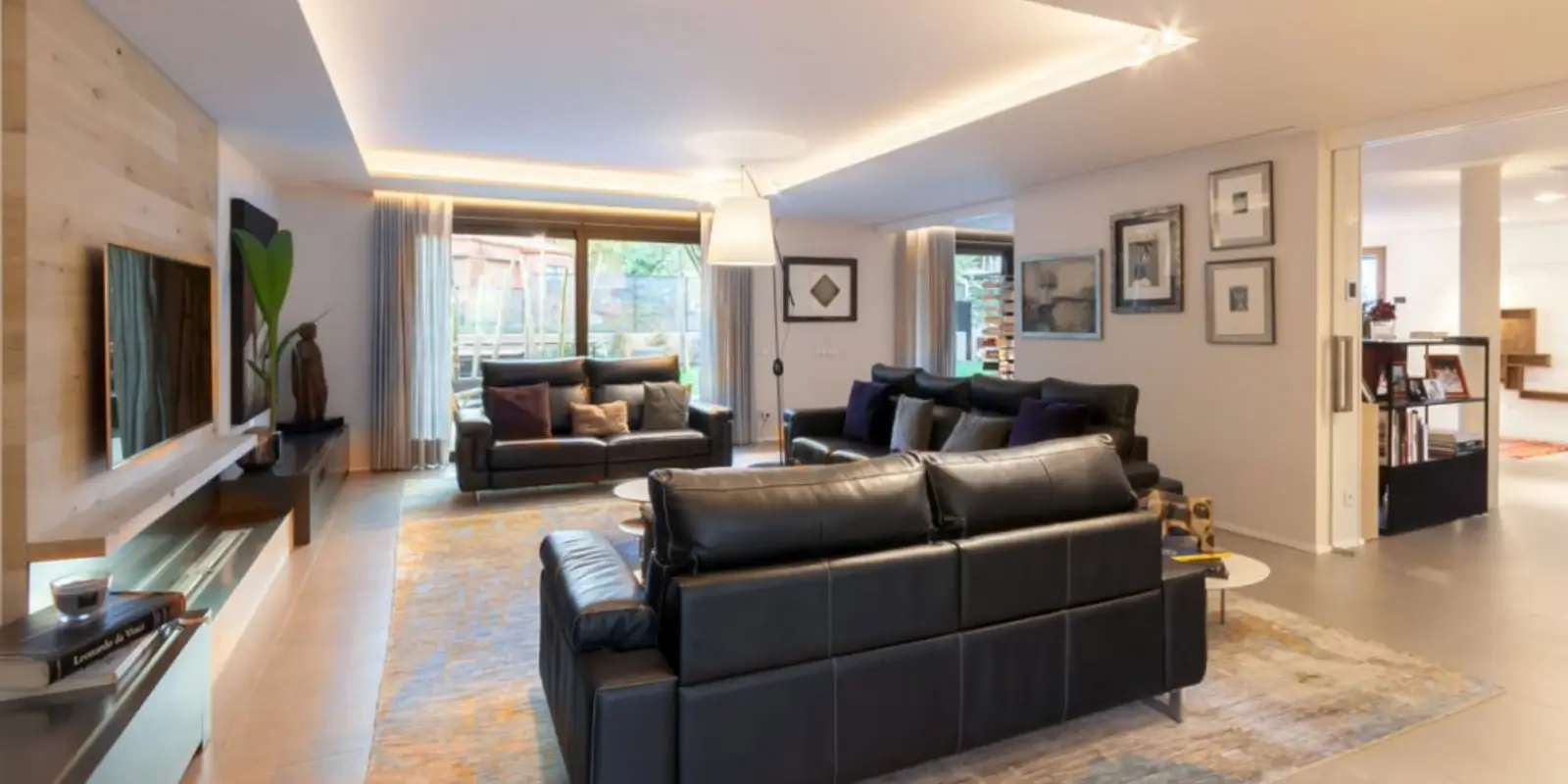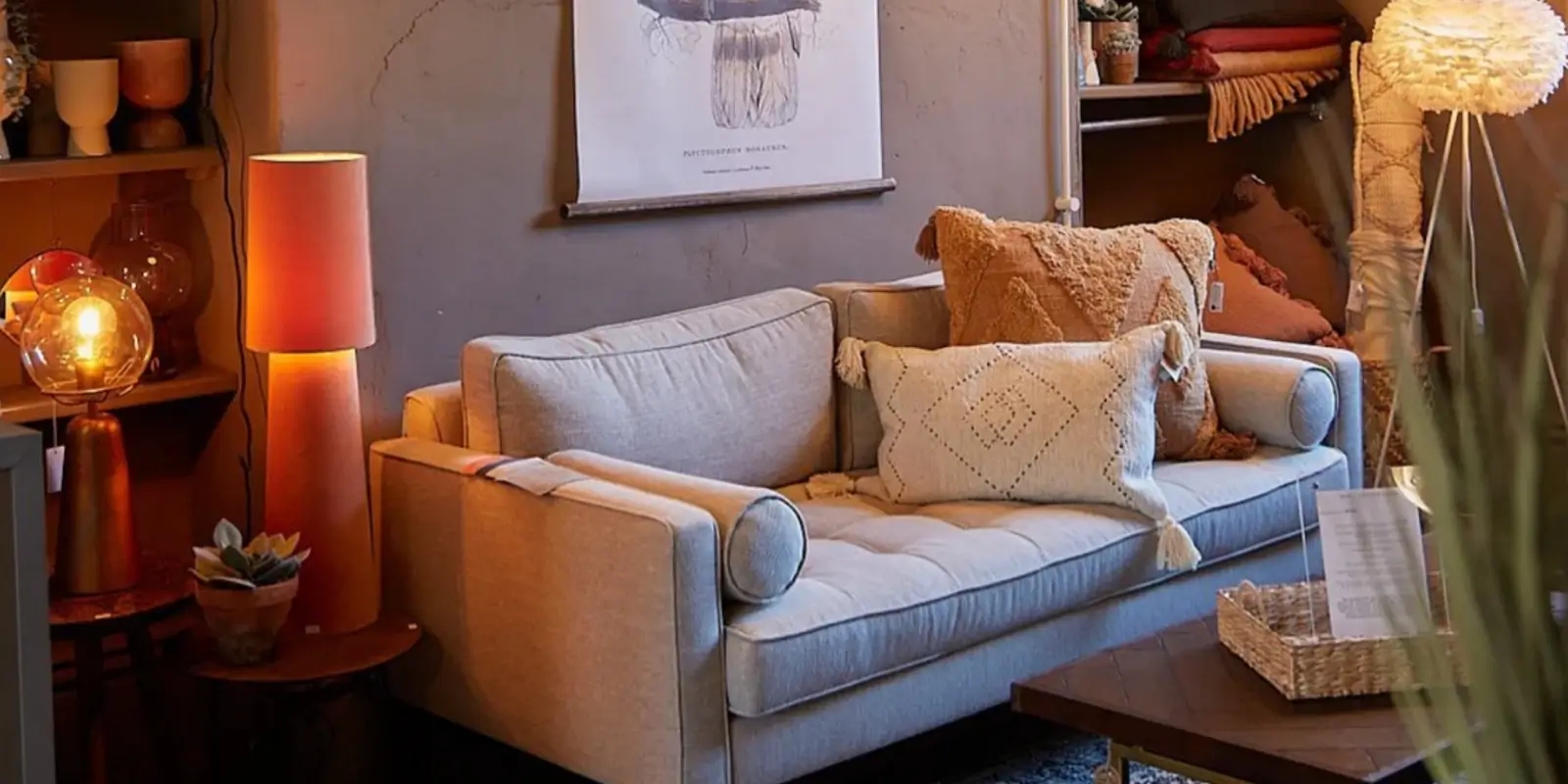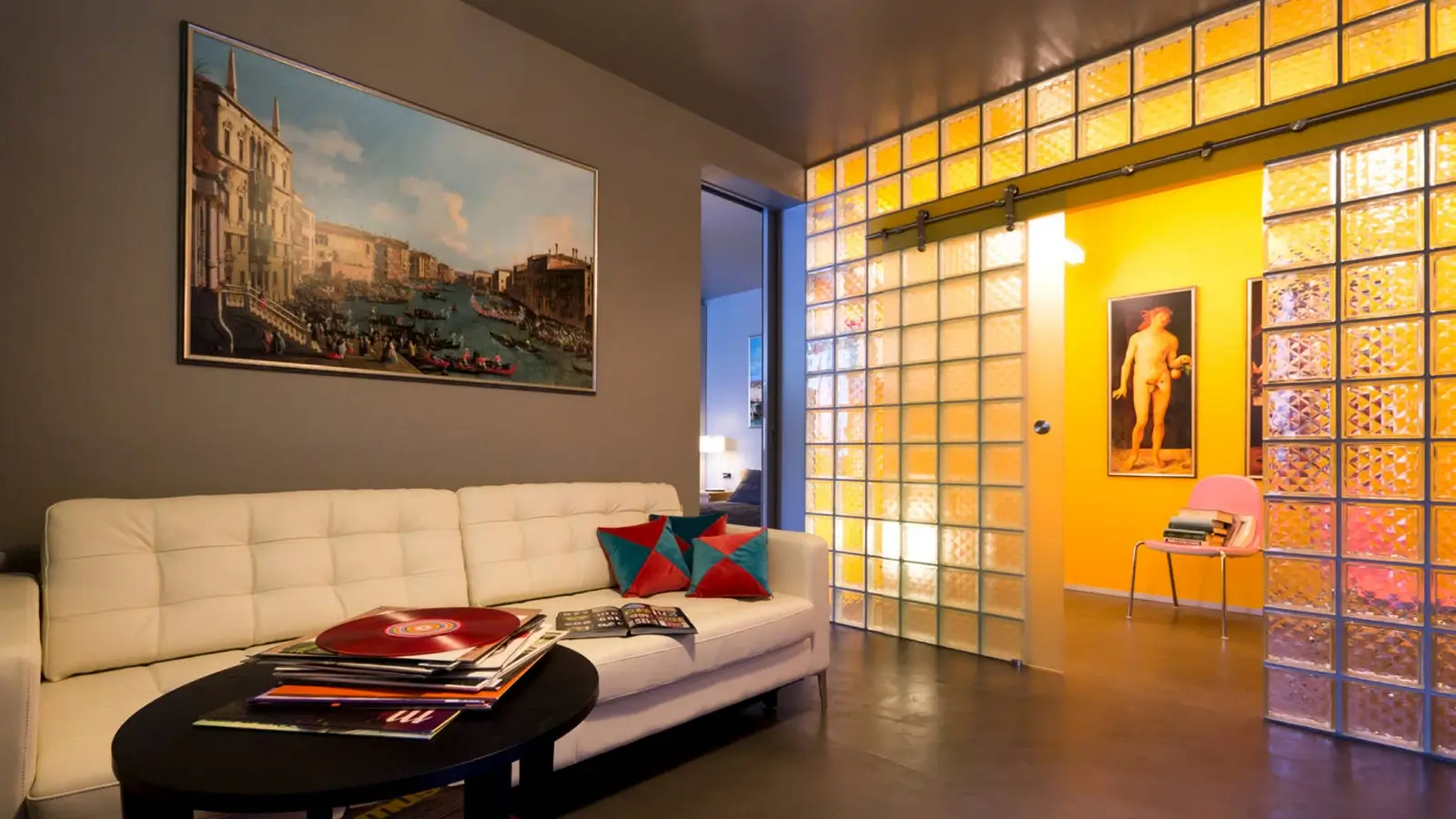Modern home lightings design shows that not every space needs a wall to feel structured; many beautiful interiors use light instead of partitions to define areasblogarama.com. An open-concept room without any visual boundaries can feel chaotic or cavernous. The solution is to treat lighting as more than just utility – strategic fixtures and techniques can subdivide a space for comfort and function while preserving its airy openness. In fact, lighting offers flexible and creative options for defining spaces: it can outline zones, create cozy pockets, establish boundaries, and set distinct moods within the same open interior.
Layer Your Light Sources for Zones
The key to a well-divided space is layering multiple types of light at different levels. Combining overhead fixtures, wall-mounted lights, and lamps creates both functional illumination and an inviting atmosphere. Lighting designers generally categorize lighting into ambient (general overall illumination), task (focused light for specific activities), and accent (highlighting features or creating mood). Each area of your home needs its own mix of these layers: for example, a kitchen requires bright task lighting for cooking, while a living area benefits from softer ambient and accent lighting for relaxation. By planning these layers together, you create a cohesive, universal lighting scheme that delineates each zone without the need for physical dividers.

(Even commercial spaces apply these principles – interior shop lighting in retail stores similarly uses focal spotlights and ambient glows to guide customers through different sections, underscoring how universal this concept is.)
Overhead Fixtures Anchor Each Zone
In open layouts, ceiling lights serve as visual anchors for different zones. A bold pendant or chandelier draws the eye and naturally centers the area beneath it. For instance, a statement chandelier above the dining table or a row of pendants over the kitchen island clearly distinguishes those areas for eating and food prep. Even if your space has lower ceilings, a stylish semi flush mount ceiling light can provide ample illumination while marking out a zone – semi-flush fixtures cast light both upward and downward, creating an ambient glow that makes a room feel larger and more open. The key is to scale each fixture to the zone’s size and style, so every area has its own focal point without clashing with the next.
Accent and Task Lighting Define Boundaries
Beyond overhead fixtures, use targeted lighting to further delineate each area. In a kitchen zone, under-cabinet lights clearly mark the cooking space while providing helpful task illumination. Along a hallway or between functional areas, wall sconces or track lights can act like subtle partitions of light, guiding the eye and separating spaces without walls. You can even outline an area with illumination: thin LED strips concealed in ceiling coves or along floor perimeters will trace the edges of a lounge or nook, differentiating it from adjacent areas. These lights create visual borders – for example, a soft wash of light on a feature wall can signal the boundary of a cozy reading spot. In essence, accent lighting serves as a “light fence,” indicating where one space ends and the next begins through changes in brightness and focus.
Cozy Lamps for Intimate Corners
Large open rooms also benefit from small pools of light to signal personal nooks. A floor lamp beside a reading chair or a table lamp on a side table can carve out a cozy corner within a vast space. The lamp’s gentle glow localizes illumination to that seating area or work spot, making it feel like its own little zone. Unlike broad overhead lights, a lamp’s limited radius naturally separates that spot from its surroundings. For instance, a pair of matching floor lamps might define a conversation area in one section of a loft, distinct from the TV viewing area. By using portable lamps in this way, you create intimate, functional sub-spaces without any walls at all.

Adapt with Dimmers and Smart Lighting
In multi-use spaces, flexibility is key. Installing dimmer switches or smart lighting systems lets you shift a zone’s ambiance on demand. For example, kitchen lights can be kept bright while cooking, then dimmed during dinner to match the relaxed mood of the adjacent living area. Smart bulbs and controllers allow you to preset scenes – you might have a bright task lighting scene for work-from-home hours and a warm, low-light scene for evening relaxation. By adjusting brightness and even color temperature by zone, you ensure each area’s lighting is appropriate for its function at any given time, all while using the same open floor plan.
Bringing It All Together
With a thoughtful lighting plan, you can divide your space using light alone, maintaining openness yet giving every corner its own identity. The best results come from mixing overhead statements, focused task lights, and ambient glows to support how each part of the room is used. As a final touch, consider consulting a professional or visiting a specialized lights shop for guidance. For instance, Union Lighting Solutions, a premier lighting retailer, offers a wide selection of products to achieve these effects – from a modern semi flush mount light for your ceiling to decorative lamps and smart controls. Outfitting your home with the right semi flush mount light fixtures and layered lighting will ensure every zone is bright, comfortable, and aesthetically distinct, all without building a single wall.






